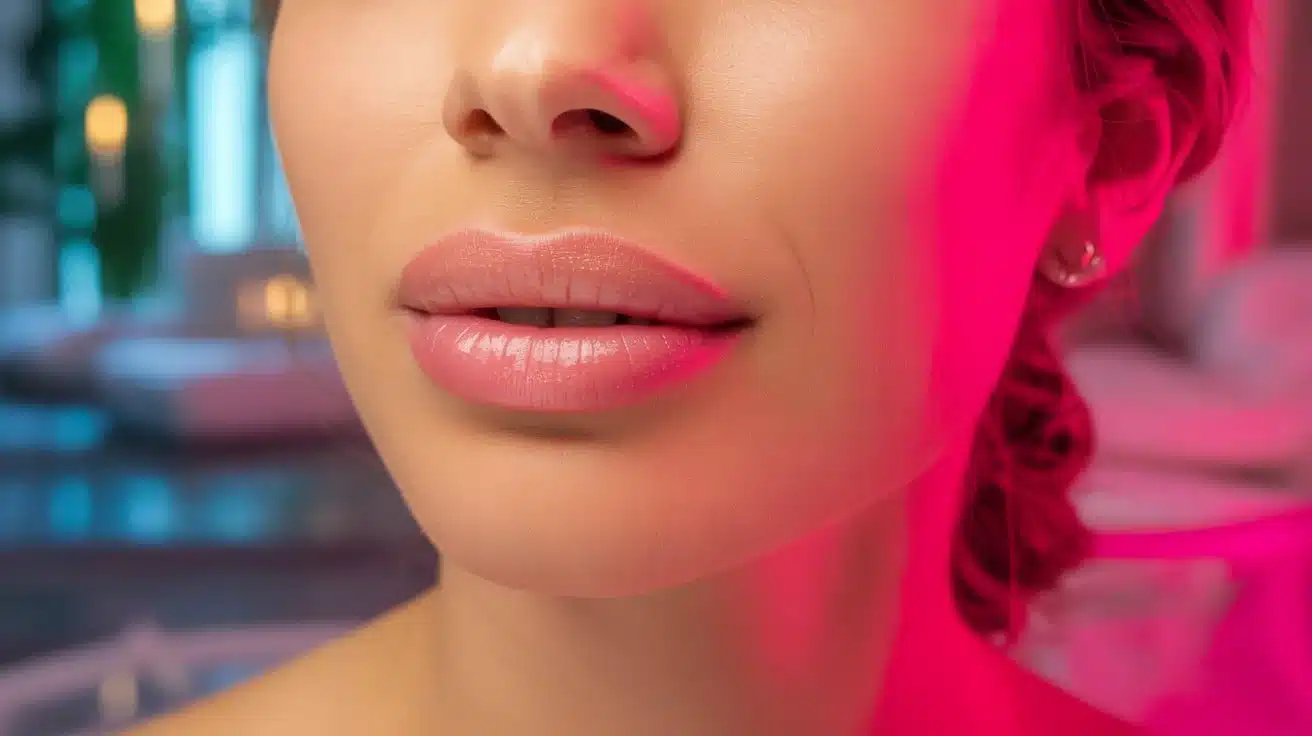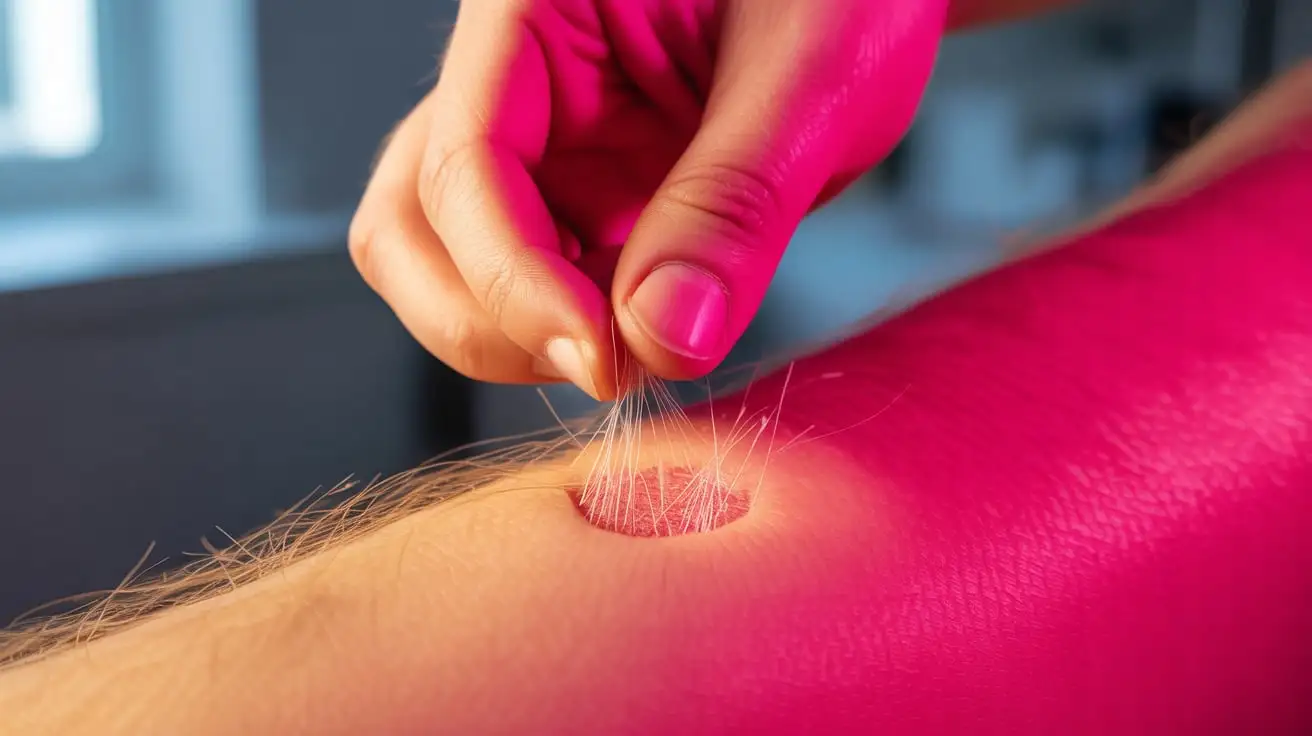Getting a tattoo is exciting, but taking care of it afterward is crucial if you want it to heal properly and look its best. One of the best ways to protect your new tattoo is by using second skin, a thin, sticky film that helps keep it safe from dirt, bacteria, and rubbing.
Table of Contents
ToggleKeep the Second Skin on your tattoo for about 3-5 days, or up to 7 days if your tattoo artist says so. If it gets wet, loose, or has too much plasma, take it off and put a new one on. After taking it off, gently wash the tattoo with mild soap and water, then apply the aftercare ointment your artist recommends. Always ask your tattoo artist for specific advice.
What is Second Skin and Why Use It for Tattoos?
Second Skin is a clear, breathable bandage that helps protect your new tattoo as it heals. It’s waterproof and keeps the tattoo clean and moist, which helps it heal faster and with less scabbing and itching. Your tattoo artist puts it on to shield the tattoo from dirt and friction, while also keeping the area moist with your skin’s natural fluids.
Here are some key guidelines to follow
Manufacturer’s instructions: Always adhere to the instructions provided by the second skin product’s manufacturer.
Artist’s advice: Your tattoo artist may offer personalized advice depending on your tattoo’s size, location, and healing progress.
Observation: If the bandage becomes wet, leaks, or starts to peel off, it might need to be changed earlier.
Comfort: If the bandage feels uncomfortable or limits movement, you might want to remove it sooner.
Generally, it’s safe to remove second skin after 3-5 days. However, if the tattoo still appears to be healing or shows signs of irritation, it’s a good idea to check with your tattoo artist for additional advice.
Why Should You Use Second Skin?
There are a few key reasons why second skin is awesome for tattoo aftercare:
- Keeps moisture in: It helps your tattoo stay moist, which can accelerate the healing process and prevent scabs from forming.
- Protection: It keeps bacteria and dirt away from your tattoo, lowering the risk of infection.
- No Friction: It prevents clothes or sheets from rubbing against your tattoo, which can irritate it.
- Cleaner Healing: The barrier prevents oils, sweat, and dirt from entering the tattoo, which helps keep it clean and promotes faster healing.
All of this makes second skin a great option for healing your tattoo quickly and safely.
How Long Should You Keep Second Skin on Your Tattoo?
So, how long should I keep the second skin on my tattoo? Most people leave it on for 2 to 5 days. The exact time can vary depending on:
- Tattoo Size: Bigger tattoos may require more time to heal under the skin.
- Tattoo Location: Tattoos in places where there’s more friction (like on your hands or feet) might need a little extra protection.
- Your Healing Speed: Everyone heals differently, so some individuals may require a bit more time than others.
If you’re wondering how long to leave on second skin, the general rule is to stick to the 2- to 5-day range, but always follow your tattoo artist’s advice.
How Do You Know When It’s Time to Remove the Second Skin?
Here are a few signs it’s time to remove the second skin:
- Moisture Buildup: If a significant amount of liquid is trapped underneath, it’s a sign to remove it.
- Time Passed: After 2 to 5 days, it’s usually safe to remove it.
- Tattoo Feels Drier: Once your tattoo starts to dry out a bit, it’s ready to be exposed to air.
- Itching or Tightness: If you start feeling itchy or uncomfortable under the second skin, it’s probably time to remove it.
Knowing how long to leave on second skin and paying attention to these signs will help you remove it at the right time.
What Should You Do After Removing Second Skin?
After you take off the second skin, follow these easy steps:
- Clean It Gently: Wash your tattoo with lukewarm water and mild, unscented soap. Be gentle, don’t scrub!
- Pat Dry: Use a soft towel or paper towel to pat it dry. Avoid rubbing it.
- Moisturize: Apply a thin layer of tattoo lotion or ointment to keep the area moisturized, but avoid overapplying.
- Avoid Rubbing or Tight Clothes: Give it some space to heal by avoiding anything that might rub against the tattoo.
Can You Reapply Second Skin After Removing It?
It’s not usually necessary to reapply second skin after removing it. But if your tattoo artist thinks it’s a good idea, they might recommend applying a fresh layer for extra protection. Just ensure the area is clean and dry before reapplying. Be careful not to leave it on for too long, as the tattoo needs to breathe.
Risks of Leaving Second Skin On Too Long
While second skin is great, leaving it on for too long can cause some problems:
- Skin Irritation: If left on for too long, the skin may become irritated from the trapped moisture.
- Infection Risk: No airflow for too long can create a perfect environment for bacteria to grow.
- Slow Healing: If your tattoo doesn’t get enough air, it may take longer to heal properly.
To avoid these issues, it’s essential to know how long to keep second skin on tattoo and not leave it on for too long.
How to Care for Your Tattoo After Second Skin Comes Off
Once the second skin is off, you still need to take care of your tattoo:
- Keep It Moisturized: Use a fragrance-free lotion or ointment to keep your tattoo hydrated.
- Avoid Sun: Keep your tattoo out of the sun for a few weeks to prevent it from fading.
- No Swimming: Avoid swimming in pools or oceans until your tattoo is fully healed to prevent infection.
- Keep It Clean: Gently wash your tattoo with soap and water once or twice a day.
Other Tattoo Aftercare Options
Second skin is popular, but there are other ways to care for your tattoo:
- Cling Film: Some people use plastic wrap to protect their tattoo for the first few hours, but it doesn’t let the tattoo breathe as well as second skin.
- Tattoo Ointments: Numerous tattoo-specific balms and ointments are available to aid in the healing process.
- Natural Oils: Some people use coconut oil, but ensure it’s safe for tattoos and won’t irritate your skin.
A second skin is often the best option because it’s easy to use and helps the tattoo heal quickly.
When to Contact a Professional
If you notice any of these signs, it’s time to reach out to your tattoo artist or a doctor:
- Signs of Infection: If your tattoo is very red, swollen, or filled with pus, it could be infected.
- Pain or Discomfort: If it’s causing more pain than expected, please consult a professional.
- Allergic Reactions: If you notice any rash or allergic reaction, it’s a good idea to seek advice.
Tattoo artists are often the best source of Skin care advice, and a doctor can provide additional guidance if anything seems off.
If you’re beauty-conscious, a lip flip is the perfect way to transform your smile – subtle, stunning, and effortlessly beautiful, with amazing before and after results.
How long should tattoo second skin stay on?
Tattoo second skin should generally stay on for 2 to 5 days. The exact duration can vary depending on factors like the size and location of your tattoo, as well as your healing process. Be sure to follow the advice of your tattoo artist, as they may recommend a specific time based on your tattoo’s unique needs.
Does second skin make a tattoo heal faster?
Yes, second skin can help a tattoo heal faster by creating a protective barrier that keeps the tattoo clean, prevents infection, and maintains moisture. It also minimizes friction and irritation, allowing the tattoo to heal in a cleaner, more controlled environment. While it doesn’t necessarily speed up the healing process dramatically, it does help ensure the tattoo heals properly and smoothly.
Can I take off second skin early?
It’s generally recommended to leave second skin on for 2 to 5 days, but in certain cases, you may need to take it off early. If the second skin becomes wet, leaks, or starts to peel off, or if it feels uncomfortable or limits movement, it may be time to remove it. However, if you’re unsure, it’s always best to consult with your tattoo artist before removing it earlier than suggested.
Can you shower with Second Skin on?
Yes, it’s waterproof, so you can shower, but avoid hot water and direct scrubbing.
What if Second Skin comes off early?
Clean the tattoo gently and follow your aftercare routine without reapplying the same bandage.
Does every tattoo need Second Skin?
Not necessarily, but many artists recommend it because it offers strong protection and comfort during the first days of healing.
How long should you leave 2nd skin on a tattoo?
Keep the 2nd skin on for 24-48 hours for small tattoos, 3-5 days for bigger ones, or up to 7 days for deep tattoos. Always follow your artist’s advice. Take it off if it gets loose, has too much fluid, or if your tattoo becomes irritated or painful.
Does second skin accelerate tattoo healing?
Yes, Second Skin helps tattoos heal faster by keeping the area moist and protected. It prevents bacteria, reduces scabbing and itching, and speeds up recovery. The waterproof bandage keeps the tattoo clean and safe without needing constant care. Just make sure to follow your tattoo artist’s aftercare instructions.
How long do y’all keep the second skin on your tattoos?
Keep “Second Skin” on for 3-5 days or as advised. Remove early if it leaks, lifts, or feels dry/itchy. Use warm water to loosen the edges, peel off gently, then wash with unscented soap, pat dry, and apply moisturizer.
Can you apply second skin at home?
Yes, you can apply “Second Skin” at home after cleaning and drying the tattoo. Cut the bandage 1-2 inches larger than the tattoo, peel off the backing, and apply it smoothly. Leave it on for several days, cleaning the tattoo gently with soap and water while it’s still on. To remove, peel gently from one edge, pulling the bandage slowly.
Conclusion
Second Skin is a great way to protect and heal your new tattoo. It keeps the tattoo clean, moist, and safe, helping it heal faster and look better. Keep it on for 3–5 days (or as your artist suggests), and if it starts to lift or leak, take it off gently. After removing it, follow your artist’s aftercare tips for the best healing. Always listen to your tattoo artist for the best results!


